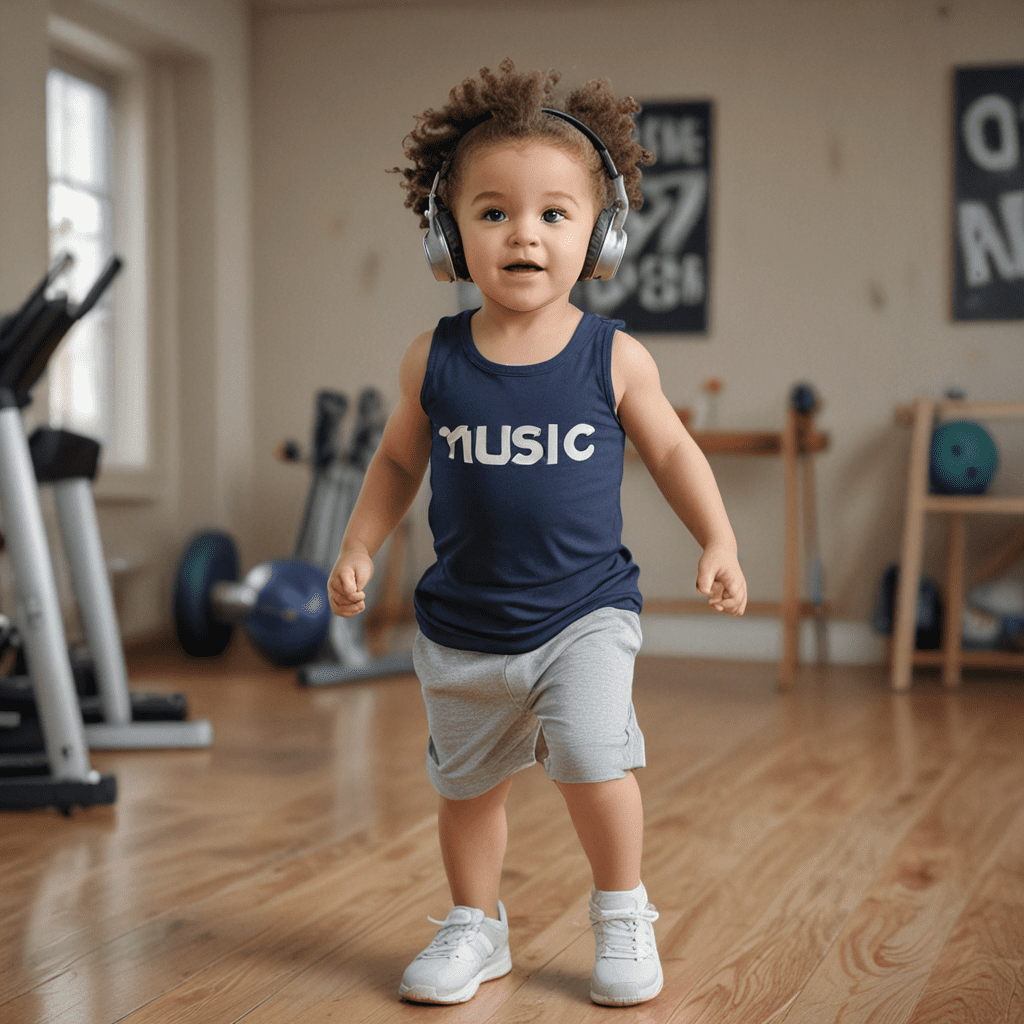
1. Introduction
The power of music extends far beyond entertainment; it also has a profound impact on our physical and mental wellbeing. When it comes to exercise, the right soundtrack can elevate your workout experience and drive you toward your fitness goals. This article will explore the multifaceted ways music enhances children's motivation to exercise, empowering them to lead active and healthy lives.
2. Music's Influence on Exercise Enjoyment
Music has an inherent ability to make activities more enjoyable. It provides a rhythmic backdrop that can sync with our movements, enhancing the overall sensory experience of exercise. Upbeat and motivating tunes have been found to reduce perceived exertion levels, making children feel less tired while exercising. By associating workouts with positive emotions, music helps foster a love for physical activity that can extend well beyond childhood.
3. The Role of Music in Enhancing Exercise Intensity and Duration
Beyond increasing enjoyment, music also has the potential to boost exercise intensity and duration. By providing an external rhythmic cue, music can guide children's movements, encouraging them to push their physical limits. The motivational lyrics and energetic melodies often found in popular music tracks serve as a constant source of inspiration, driving them to work harder and for longer.
4. Music as a Motivational Tool for Different Exercise Types
The effects of music on exercise motivation extend across various exercise modalities. For example, in endurance-based activities like running and cycling, music with a consistent beat can help children maintain a steady pace. In team sports such as soccer and basketball, music can foster camaraderie and a sense of shared purpose. Even in strength training workouts, music can provide an extra burst of energy to power through those final sets.
5. The Effect of Music on Children's Perceived Effort During Exercise
The subjective perception of effort is a critical factor that affects exercise motivation. Studies have shown that listening to music while exercising can reduce children's perceived exertion by up to 12%. This means that with music, they may perceive an intense workout as being easier, allowing them to push their boundaries and achieve better results.
6. Physiological Responses to Music During Exercise
Music's motivational effects on exercise are not merely psychological. Research suggests that music can elicit physiological responses that enhance performance. Listening to music while exercising has been associated with increased heart rate, improved oxygen consumption, and reduced lactate levels. These physiological adaptations can translate into improved endurance and recovery, allowing children to exercise for longer durations and at higher intensities.
7. The Cognitive Benefits of Music on Exercise Performance
Music has the remarkable ability to influence cognitive processes related to exercise. It can improve attention, focus, and mood, all of which are essential for successful workouts. By providing a rhythmic and engaging stimulus, music helps children stay present in the moment, allowing them to concentrate on their movements and form. Additionally, music can alleviate boredom and monotony, making exercise feel less like a chore.
8. Music's Impact on Children's Exercise Adherence
In the long run, the key to maintaining a healthy lifestyle lies in consistent exercise. Music plays a crucial role in promoting exercise adherence, particularly among children. By making workouts more enjoyable, reducing perceived effort, and providing cognitive benefits, music helps children sustain their motivation to exercise over time. This increased adherence leads to cumulative health benefits and a lifelong love for physical activity.
9. Considerations for Using Music in Exercise Programs
When using music in exercise programs for children, several factors should be taken into account. It's important to select age-appropriate music that appeals to their interests. The volume should be kept at a comfortable level to allow for clear communication and minimize the risk of hearing damage. Additionally, consider the length and intensity of the workout when choosing music to ensure it provides continuous motivation throughout the session.
10. Conclusion
In conclusion, music has a multifaceted impact on children's exercise motivation. It enhances enjoyment, increases intensity and duration, serves as a motivational tool for various exercise types, reduces perceived effort, elicits physiological responses that boost performance, improves cognitive abilities, and promotes long-term exercise adherence. By incorporating music into their workouts, children can reap the numerous benefits of regular physical activity, setting the foundation for a healthier and more active life.
Frequently Asked Questions
- What types of music are most motivating for exercise?
Answer: Upbeat and energetic music with a clear and consistent beat tends to be the most motivating for exercise.
- How can I select age-appropriate music for children's exercise programs?
Answer: Pay attention to the lyrics and ensure they are suitable for children. Consider the child's interests and musical preferences.
- What is the optimal volume for music during exercise?
Answer: The volume should be loud enough to be heard clearly over the sound of exercise but not so loud as to cause discomfort or hearing damage.
- Can music help children stay motivated to exercise over time?
Answer: Yes, music can enhance exercise adherence by making workouts more enjoyable and reducing perceived effort.
- What are some practical tips for incorporating music into children's exercise programs?
Answer: Create playlists that cater to the child's interests and age, experiment with different genres and tempos, and allow children to have input in the music selection process.


